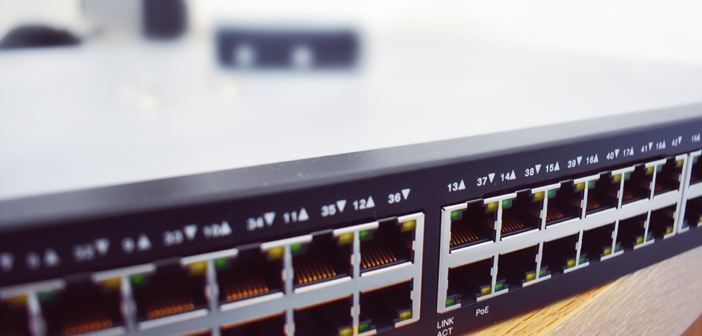Zigbee vs. Z-Wave
Zigbee and Z-Wave are the two major protocols running for the spot of best wireless communication protocol for the smart home. Yet, does Zigbee manage to comply with all industry standards? Let’s discuss!
It’s obvious that here at BuildYourSmartHome.co we are quite the Z-Wave enthusiasts. However, if we are completely frank, our team doesn’t care as much about the protocol of choice, as much as we do about an honest take of the benefits and downsides of each option.
With that in mind, we decided to do a proper introduction of both protocols alongside a rundown of the main differences between them. In the process, we’ll take an honest look at why a smart home enthusiast might choose to work with one protocol over another. To top things off, we’ll mention the other available options on the market and hopefully, by the end you’ll be better able to make an educated buyer decision.
Why you need to stick to one wireless protocol?

The first and the most obvious question to take care of is why the need of one particular protocol? Can’t one just put up as many devices in their home as they please without a care in the world? Yes and no.
You see, the reason why smart home enthusiasts are quite into protocols is the ability to create a mesh network in your home. Via a mesh network, the devices in a home that have wireless connectivity are able to talk with one another more easily. What’s more, by having a mesh network, these devices would usually be able to more easily talk to the cloud.
Of course, easy does not really describe the spectrum of benefits that a mesh network has. For example, whether on Z-Wave, Zigbee or another protocol, by letting your devices communicate with one another directly, the response time between them would be lower.
Imagine if you have a smart lighting solution and a smart garage door. You might want to setup the lighting to turn on, once the garage door has opened. If they are both able to communicate on the same protocol, with or without a hub, the speed would be faster.
Another amazing benefit of a mesh network, and one that might be slightly controversial, is that it is considered a more secure option. When you have your devices communicating via one dedicated hub or directly with one another, before they connect with the cloud, the potential penetration holes for an attack would be fewer.
Of course, this means that one attack could potentially gain control of all of your devices. Yet, as mentioned in our Z-Wave ransomware piece, someone would probably have a huge grudge and would need far more resources and knowledge to do so, than if you just had basic physical security.
Zigbee and the 2.4GHz of ‘Why’

One of the most invaluable reasons people choose to switch to a particular wireless protocol is the reliability and speed of a network. The second reason being, the power consumption of a product.
You see, wireless communication is nothing more than radio waves. As simple as this sounds, the same science that has made listening to music transmitted hundreds of miles away possible is used in our everyday magic communication today. In fact, both cellular communication, Wi-Fi and other wireless protocols use radio waves.
Of course, the technology is much different than it was back in the day. The transmitters and receivers are able to communicate much faster and the encryption and security of the transmitted information has also improved.
Yet, what is most important to know in this case is that wireless communication protocols work on a dedicated radio wave frequency. The devices (transmitters and receivers) that make that possible also use a significant amount of energy to operate properly.
The frequency is primarily responsible for the speed of a network. Wi-Fi and most of today’s technology uses the 2.4GHz network. Zigbee does the same. And while this might not sound as a huge issue, it is.
As obvious as it might be, the more devices you have operating at the same frequency, the more cluttered the signals would be. The more cluttered the network, the slower the communication becomes.
Imagine you are a receiver. Now imagine hearing three different radio stations at the same time and focusing on hearing only one. Possible and doable, yet harder than if you were listening only to that particular one.
Wi-Fi and Bluetooth usually run on the 2.4GHz network as well. With the 2.4 GHz network being crowded, the only real benefits that Zigbee has over Wi-Fi and Bluetooth are increased security and low power consumption.
It should be noted that some tech enthusiasts and Wi-Fi router manufacturers have also started switching to the 5GHz band due to the increased data transmition capacity and for the reason of increased speeds and to avoid the crowded space, making it pretty much the new Wi-Fi standard.
Z-Wave, on the other hand, runs at other frequencies. Particularly 868.42 MHz in Europe and at 908.42 MHz in North America. The protocol additionally uses other bands depending on the specific region and country regulations.
Technically, an increased frequency would also allow for better data transmitting capacity. Yet, due to the 2.4GHz band being overcrowded and the data devices need to access being limited, Z-Wave takes the charge in our comparison. But, this is not really where things end.
The Reliability Factor of a Protocol

The second most important ordeal of a protocol’s fight to be the best is the reliability. First and foremost the lower frequency of Z-Wave allows it to transmit data at a wider range. While for most home owners the issue of distance won’t be that great, others would need to purchase and install signal boosters (also known as repeaters and extenders) for Zigbee, Wi-Fi and Bluetooth mesh networks. Yet, the same can be said for Z-Wave. Plus, Zigbee technically supports up to 61,000 interconnected devices, while Z-Wave can hold no more than 232 devices connected to one mesh network.
Another huge issue with Z-Wave in terms of reliability (because let’s face it, you probably don’t have 232 devices in your home to be in any way irritated by the limitation,) is that the protocol allows for only up to four hops between a device and a controller.
Not these types of hops, but metaphorically you can think of it as a bunny jumping from one device to the other.
You see, in a mesh network, the interconnected devices are able to transmit data to one another and to a central hub or controller, while acting as repeaters at the same time. This would mean that two devices in a mesh network that are at a longer distance can communicate via a third device in the same network that is found at an in-between distance in relation to the two.
Z-wave has a limitation of four hops between the dedicated controller and a device, while Zigbee doesn’t have any such hop limitation between devices.
Yet, the reliability round would still go to Z-Wave. The reason for this is not only that ‘hop’ count isn’t that crucial in a proper smart home setup and also that with the increased range, Zigbee devices tend to experience more reliability issues due to range issues. Not to mention, the crowded factor of a frequency band also comes into play in terms of the reliability, hence Z-Wave being the better choice if reliability is what you covet.
Power-Consumption and Market Ecosystem Diversity

Both Zigbee and Z-wave are extremely low-power consumption protocols. While Zigbee market themselves as such and Z-Wave don’t, there ins’t much of a difference. We don’t have the exact numbers, because for the most part, the power consumption levels are also down to each particular device and its operation. Yet, if you are interested in an industry-grade solution, we would recommend checking KNX first, before going for either Z-Wave or Zigbee.
When it comes to market ecosystem diversity, it’s important to note that Z-Wave is held by a private organization (Sigma Designs), that licenses the technology. With this, they hold a stricter grip of the implementation of the product, resulting in better market interoperability. This would mean that each and every one of the thousands of Z-Wave certified product would be able to operate seamlessly in your existing Z-Wave network of devices.
At the same time, Zigbee is open source and is generally maintained by the Zigbee Alliance. While this is not a huge issue in itself, the fact that there are multiple levels of certification that are either targeting the hardware certification or the software certification, does pose some challenges when it comes to interoperability. This would mean that while there are technically more Zigbee products available users might experience certain issues when trying to pair to Zigbee devices together. However, as long as the buyer makes an educated choice and researches the operability of a Zigbee product before buying it, there should be no real issues.
To be completely frank, as long as you are buying a Zigbee device from a reputable source, you should have no issue connecting it to your existing Zigbee network.
That said, both Zigbee and Z-Wave are pretty much tied in the round of power consumption and market reliability, each having only slight benefits over the other in these categories, that are not truly that vital in terms of a customer experience and market choice.
A Price Difference?
Another topic of discussion that often comes up when people decide between one of the two protocols is the price. Considering the fact that Zigbee is open source, while Z-Wave is in corporate hands, one could expect for there to be a price difference between devices that use one of the two protocols.
However, after we did a detailed Z-Wave vs. Zigbee price breakdown and comparison, we found that there is no distinct difference between the price tags of devices that have one of the two protocols.
The Conclusion
Ultimately, the choice of whether to use Z-Wave or Zigbee as your main smart home protocol comes down to personal preferences. Having the broad spectrum overlook of the two choices, one can easily conclude that Z-Wave is the preferred option. By choosing it as your primary protocol, you can rely that your smart home network would be as stable and as secure as the current market options allow you to be. Yet, there is nothing wrong with choosing Zigbee either. Today, you can just as easily find proper devices running on the protocol that are quite easy to set up and operate. Plus, with the new Wi-Fi standard at 5GHz, the clustering issues that might arise from the 2.4GHz problem can easily be avoided.
Which protocol do you prefer and why? Do you think our article gave a detailed overlook of both option or do you believe we’ve missed something in the process? Let us know!






